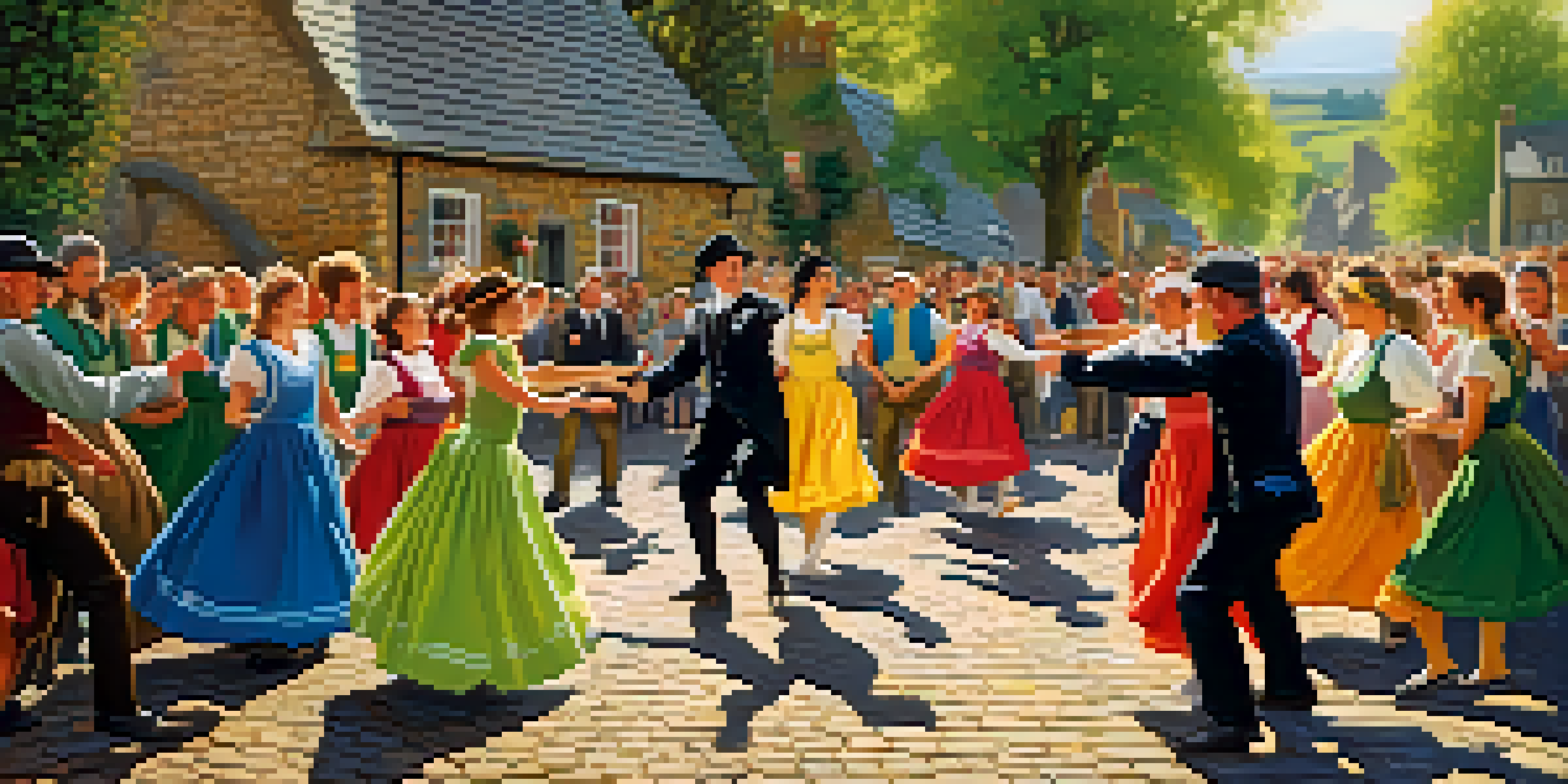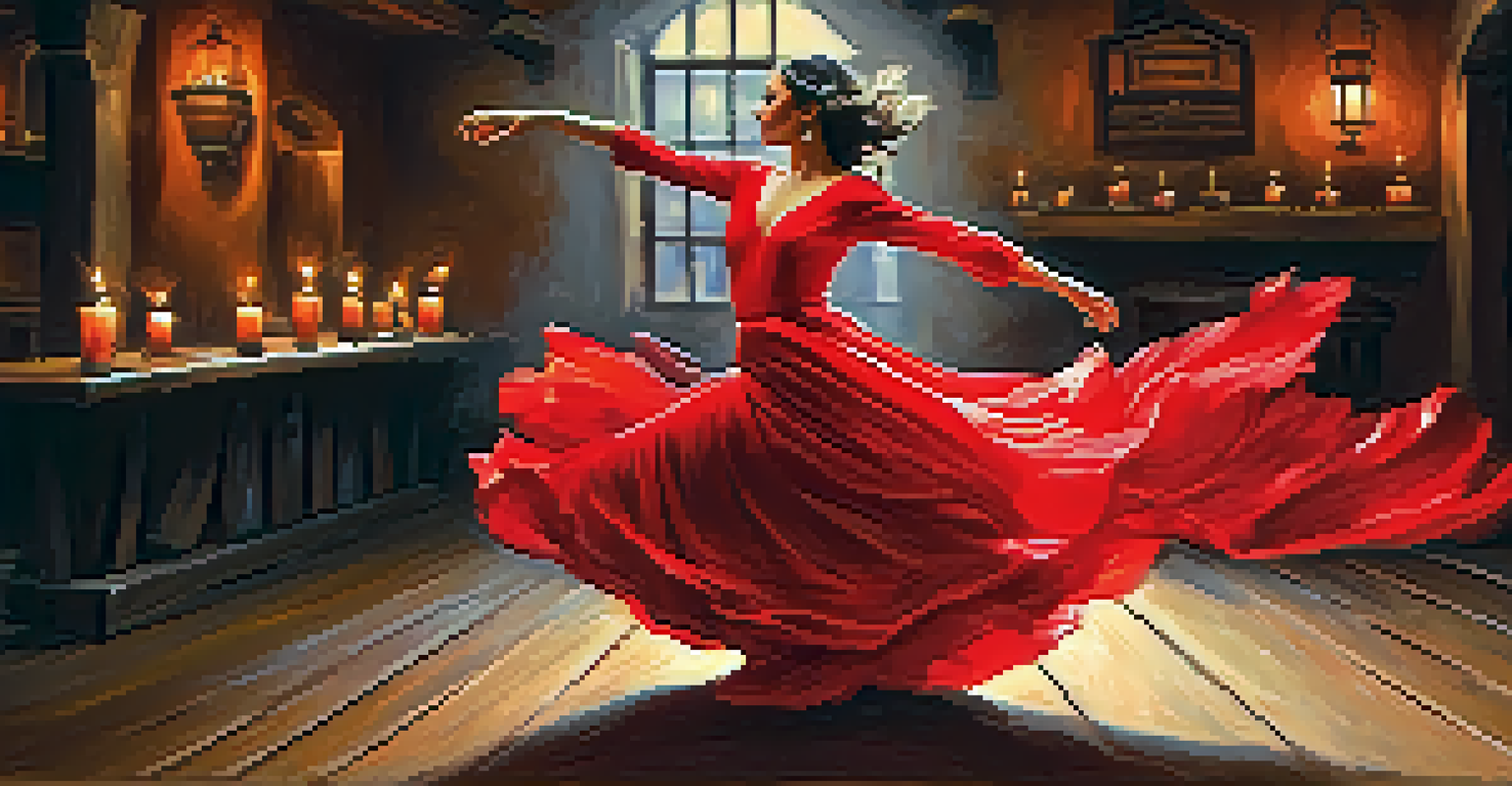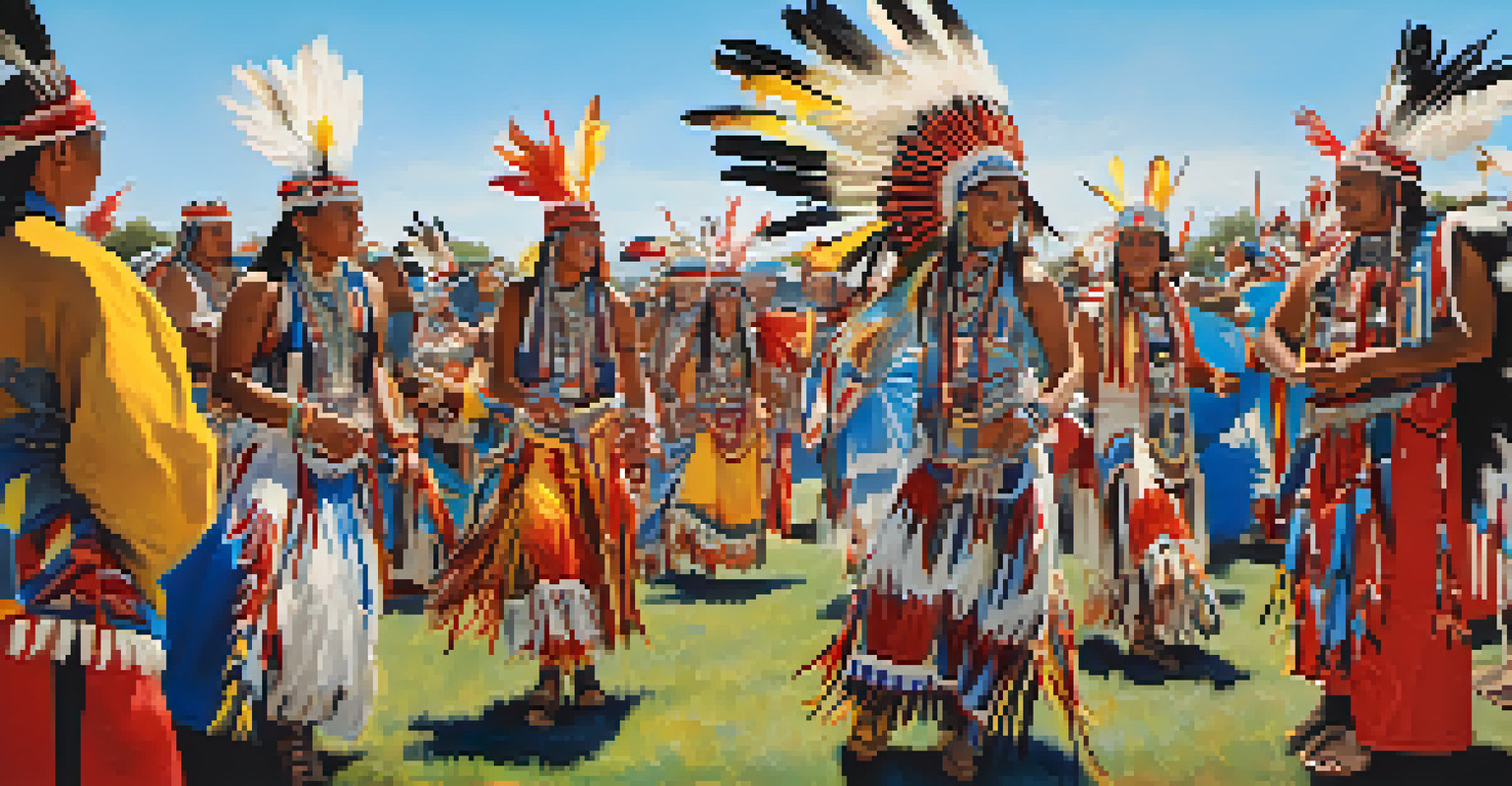Folklore Dances: Stories Told Through Movement and Music

The Essence of Folklore Dances in Cultural Heritage
Folklore dances are more than just rhythmic movements; they're a window into a culture's soul. Each dance tells a story, often rooted in centuries-old traditions that reflect the values, struggles, and celebrations of a community. These dances are a living history, passed down through generations, and they encapsulate the identity of the people who perform them.
Dance is the hidden language of the soul.
For instance, the Irish jig not only showcases lively footwork but also narrates tales of joy and community spirit. Similarly, the Mexican folklórico dances celebrate the rich tapestry of Mexican history, portraying everything from indigenous rituals to Spanish influences. By participating in these dances, performers and audiences alike engage in a shared cultural experience, fostering a sense of belonging.
In many ways, folklore dances are a vibrant reminder of our shared humanity, bridging gaps between different cultures. As we explore these dances, we uncover the narratives that shape our world, helping us appreciate the diverse ways people express their stories through movement and music.
How Music Enhances the Storytelling in Dance
Music is the heartbeat of folklore dances, providing the rhythm and emotion that elevate the storytelling experience. Each note and beat can evoke specific feelings, guiding the dancers' movements and influencing the audience's reactions. This synergy between music and dance creates an immersive experience that resonates deeply with both performers and spectators.

Take the example of the Russian folk dance, where traditional instruments like the balalaika or accordion set a lively tone that invites participation. The fast-paced melodies encourage energetic footwork, while slower tunes allow for graceful, expressive movements. This interplay not only showcases the dancer's skill but also highlights the cultural significance of the music itself.
Folklore Dances Preserve Culture
These dances serve as living archives, safeguarding the history and values of communities for future generations.
Moreover, the lyrics of folk songs often lend additional layers to the stories being told. They may recount historical events, celebrate nature, or express love and loss, thus enriching the dance's narrative. Through this harmonious blend of music and movement, folklore dances become a powerful means of cultural expression and communication.
Regional Variations: Unique Dances from Around the World
Around the globe, folklore dances take on distinct forms, each reflecting the unique cultural influences of their regions. From the energetic flamenco of Spain, characterized by passionate footwork and hand claps, to the graceful hula of Hawaii, which tells stories of nature and ancestry through fluid movements, each dance is a treasure trove of cultural heritage. These regional variations offer a glimpse into the diverse ways communities celebrate their identities.
Music can change the world because it can change people.
For instance, the traditional Scottish ceilidh dance combines lively music with group participation, creating a festive atmosphere where everyone can join in. This communal aspect fosters connections and reinforces social bonds, echoing the dance's historical role in gatherings. Similarly, the vibrant Garba dance from Gujarat, India, celebrates the festival of Navratri, highlighting the importance of community and faith.
Exploring these regional dances not only showcases the beauty of cultural diversity but also encourages appreciation and respect for different traditions. Each dance serves as a reminder that, while our stories may differ, the desire to express and connect through movement and music is a universal human experience.
Folklore Dances: A Means of Preserving Tradition
In a rapidly changing world, folklore dances play a crucial role in preserving cultural traditions and stories. They serve as a living archive, safeguarding the history and values of communities that might otherwise be lost. By maintaining these practices, we ensure that future generations have access to the rich tapestry of their ancestors' experiences.
Many communities actively work to keep their folklore dances alive through festivals, workshops, and educational programs. For example, the Appalachian clogging dance has seen a revival thanks to dedicated enthusiasts who host events and teach others the traditional steps. This grassroots effort not only preserves the dance but also fosters a sense of pride and ownership among participants.
Music Enhances Dance Storytelling
The synergy between music and dance creates an immersive experience that deepens the narrative expressed through movement.
Moreover, as globalization continues to influence cultural practices, folklore dances can act as a counterbalance, reminding us of the importance of local identity. They provide individuals with a connection to their roots and a sense of belonging, reinforcing the idea that traditions can thrive even in modern settings.
The Role of Folklore Dances in Community Building
Folklore dances foster a strong sense of community by bringing people together through shared experiences. Whether performed at festivals, weddings, or community gatherings, these dances create an inclusive environment where individuals can connect and celebrate their cultural heritage. This collective participation strengthens social bonds and cultivates a sense of belonging.
Consider the Native American powwow, where dance plays a central role in honoring traditions and bringing diverse tribes together. Participants don colorful regalia and perform traditional dances, showcasing their heritage while creating a vibrant atmosphere of unity and respect. Such events not only celebrate individual cultures but also promote understanding among different groups.
Furthermore, as people engage in folklore dances, they pass down stories and values, reinforcing their cultural identity. This communal aspect highlights the importance of shared narratives, ensuring that everyone feels represented and valued. By participating in these dances, individuals contribute to a living legacy that nurtures connection and mutual respect within their communities.
Folklore Dances as a Form of Artistic Expression
Folklore dances are not just cultural artifacts; they are also a dynamic form of artistic expression. Dancers infuse their movements with emotion, creativity, and personal interpretation, elevating the traditional practices into a contemporary art form. This blend of tradition and innovation allows folklore dances to evolve while still honoring their roots.
For example, contemporary choreographers often draw inspiration from traditional dances, integrating modern elements while preserving the essence of the movement. This fusion can be seen in performances that combine hip-hop with traditional African dance, creating a unique narrative that resonates with younger audiences. Such adaptations keep the art form relevant and accessible, ensuring its survival.
Dances Foster Community Connections
Folklore dances bring people together, strengthening social bonds and cultivating a sense of belonging within communities.
Moreover, as folklore dances gain recognition on global stages, they provide opportunities for cultural exchange and appreciation. Audiences are not only entertained but also educated about the stories and traditions that shape each performance. This artistic dialogue enriches the cultural landscape, fostering greater understanding and respect for diverse backgrounds.
The Future of Folklore Dances in a Globalized World
As we look to the future, the challenge lies in balancing tradition with modern influences in folklore dances. Globalization has opened doors for cross-cultural exchanges, but it also poses the risk of diluting the authenticity of these art forms. To preserve their integrity, communities must find ways to adapt while remaining true to their historical roots.
Many dance groups are embracing technology, using social media and online platforms to share their stories and reach wider audiences. This digital presence allows for greater visibility and appreciation of folklore dances, encouraging younger generations to connect with their heritage. By leveraging these tools, communities can keep their traditions alive in a rapidly changing world.

Ultimately, the future of folklore dances will depend on the commitment of individuals and communities to nurture and pass on their cultural narratives. By celebrating and adapting these art forms, we can ensure that the stories told through movement and music continue to resonate for generations to come.